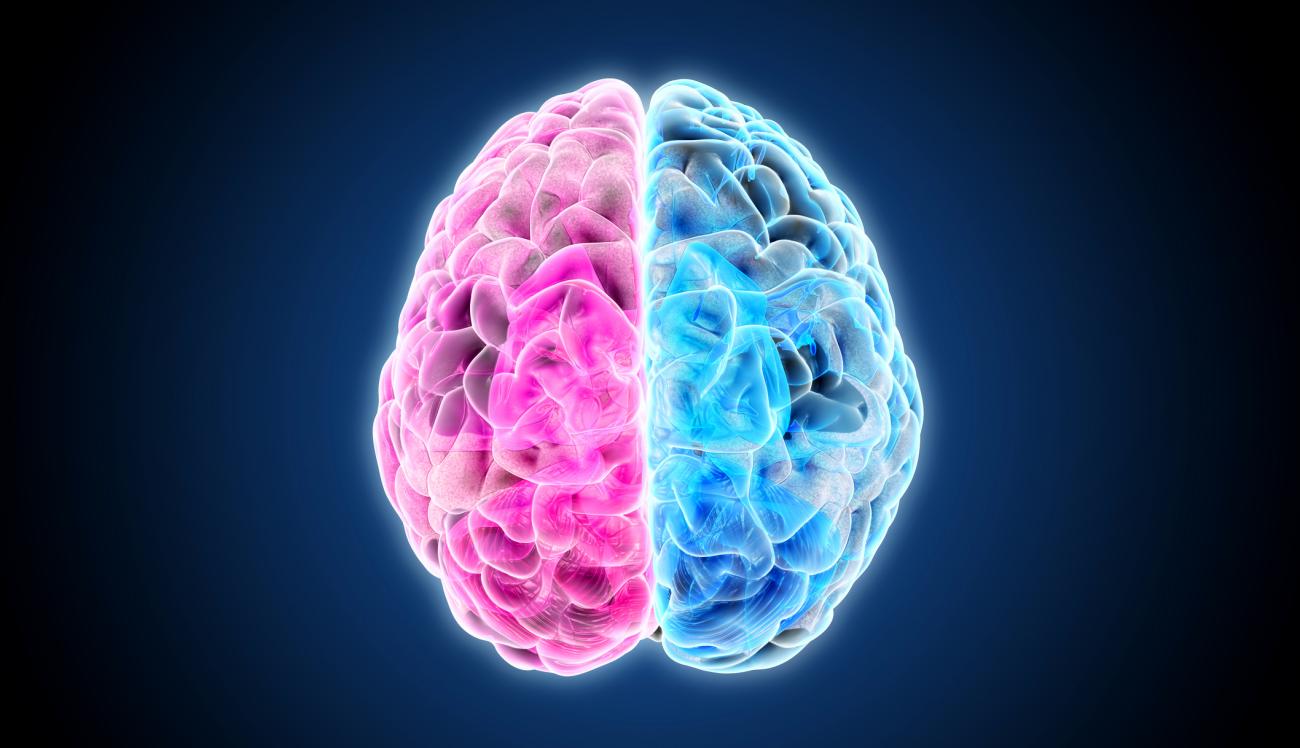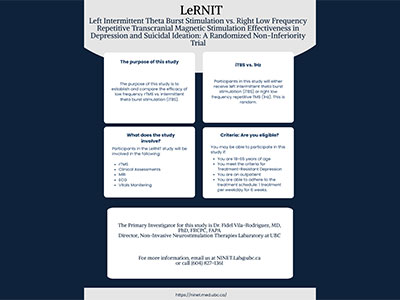
The novel approach improved mood and reduced suicidal ideation among research participants, laying the groundwork for more targeted treatments.
The first study of its kind into low-frequency repetitive transcranial magnetic stimulation (rTMS) on a specific region of the brain shows promising results for individuals with treatment-resistant depression (TRD). Led by Vancouver Coastal Health Research Institute researcher Dr. Fidel Vila-Rodriguez, who has published extensively on rTMS for TRD, the study offers new potential inroads for the safe and effective treatment of depression and suicidal ideation.
“The approach we tested has the potential to offer a more portable and accessible treatment option for people with TRD,” says Vila-Rodriguez.

People with TRD have a major depressive disorder (MDD) characterized by a life-altering low mood that impedes their ability to work, complete daily living tasks and care for themselves and family members. Approximately 11 per cent of Canadians will experience MDD, which can lead to TRD, during their lifetimes.

rTMS is a non-invasive treatment modality for TRD, obsessive-compulsive disorder, smoking cessation and chronic pain, among other conditions. Using magnetic field pulses, the approach modulates specific regions of the brain to rewire malfunctioning brain circuits believed to be contributing to MDD.
Prior studies have shown the efficacy of treating TRD with high-frequency rTMS applied to the left dorsolateral prefrontal cortex (DLPFC) in the upper frontal region of the brain — an area responsible for executive functions and cognitive control, including control over emotions. However, no prior research has investigated the application of low-frequency rTMS on the right DLPFC while acquiring functional imaging of the brain.
While high-frequency rTMS uses magnetic frequency pulses at or above five hertz, low-frequency rTMS delivers pulses at or below one hertz. High-frequency rTMS machines are also larger apparatuses that are difficult to move; whereas, low-frequency rTMS could potentially be delivered using a more portable device that could be transported to various locations, including patients’ homes.
“Low-frequency rTMS used on the right side of the brain has also been associated with less pain or discomfort during treatment,” notes Vila-Rodriguez.
Different applications of rTMS could support tailored treatment modalities
Vila-Rodriguez’s recent study, published in the Journal of Affective Disorders, examined the results of a previous clinical trial involving 55 individuals with TRD, of which 39 were female. Participants received 30-minute sessions of low-frequency rTMS applied to their right DLPFC on weekdays over the course of four weeks at the NINET Laboratory at UBC Hospital.

Over half of study participants experienced improved mood and 60 per cent experienced reduced suicidal ideation, while no change in mood was experienced by 26 per cent of participants and no change in suicidal ideation among 40 per cent.
“Factors that contributed to no improvement were male sex, higher baseline anxiety and higher baseline suicidal ideation,” notes Vila-Rodriguez. Treatment with benzodiazepine — a sedative medication that slows down brain and nervous system activity — was an additional risk factor for no improvement in mood.
“What we saw is that targeting the right DLPFC with low-frequency rTMS may be better for reducing suicidal ideation.”
“Clinically, the implication of our findings could be that, if someone is struggling with TRD and does not present with any or barely any suicidal ideation, a first-line approach for rTMS may be high-frequency treatment of the left side,” says Vila-Rodriguez. “For individuals who present with more pronounced suicidal ideation, we may opt to treat with rTMS on the right side first.”
“These findings present an opportunity to devise a test to identify what parts of the brain are more likely to respond to rTMS modulation, akin to finding a key that unlocks the healing potential of the brain for TRD.”
“This test could lead to a more personalized approach to treatment, such as targeted rTMS designed specifically to treat individuals with higher levels of suicidal ideation.”


